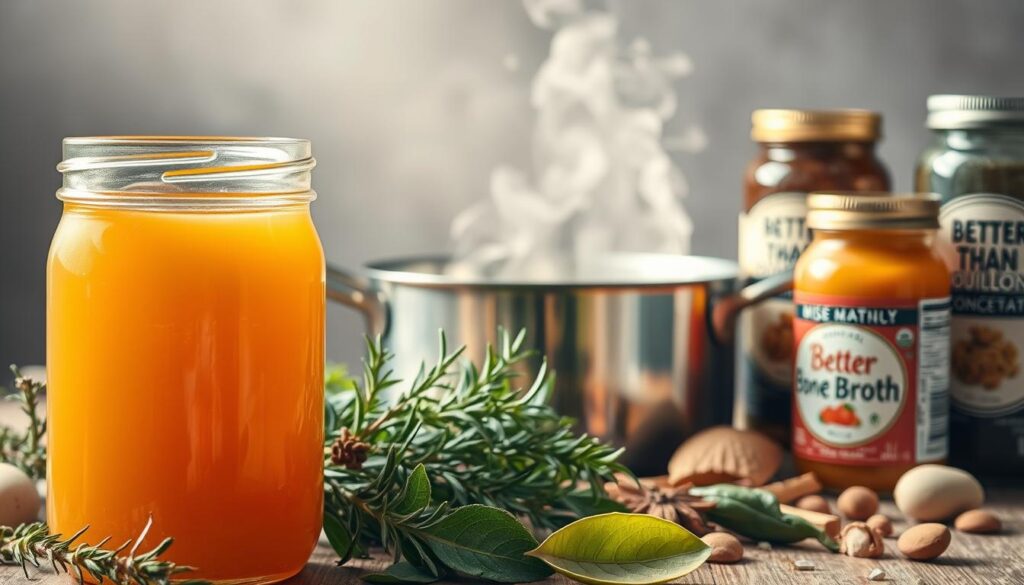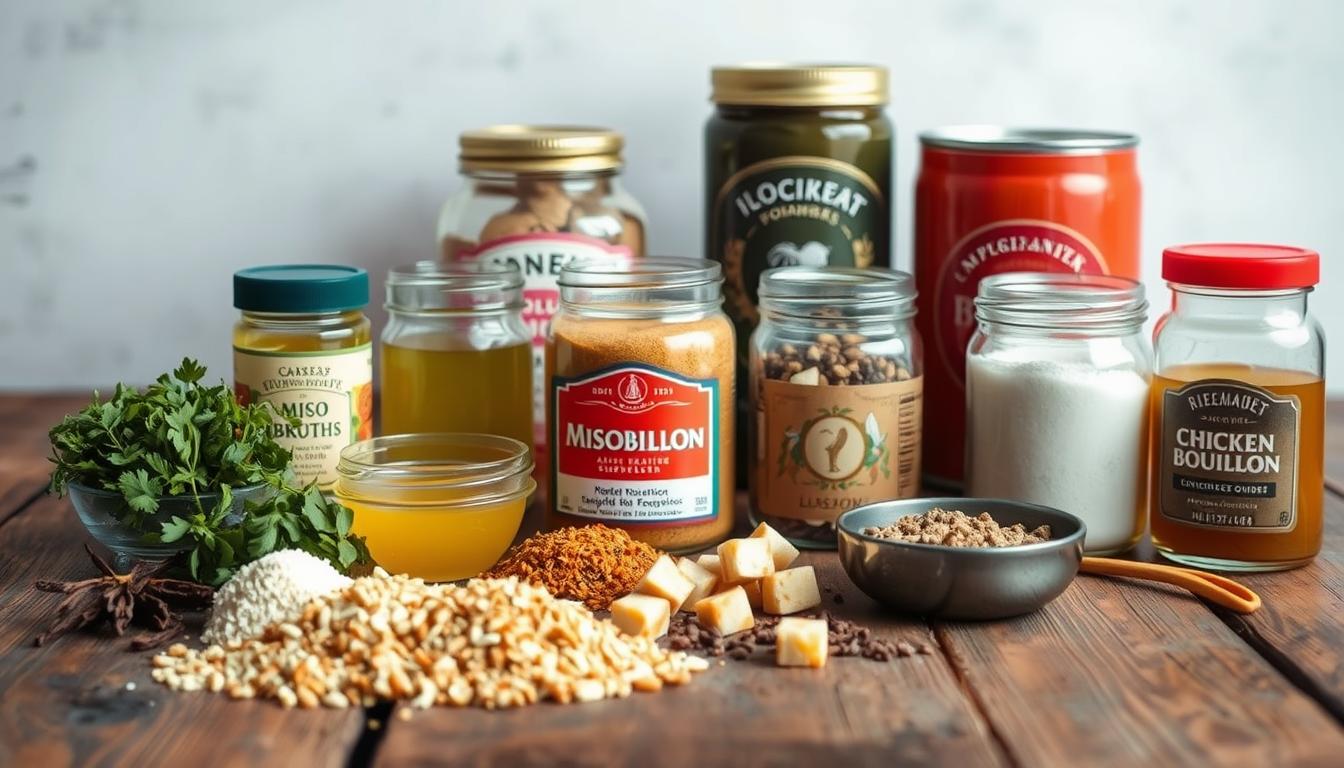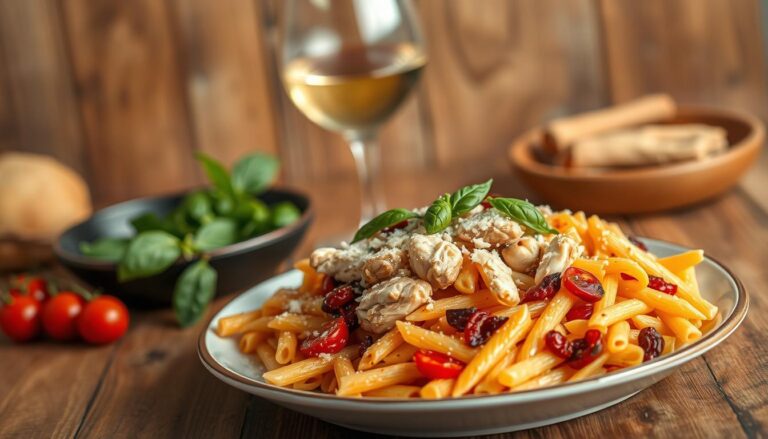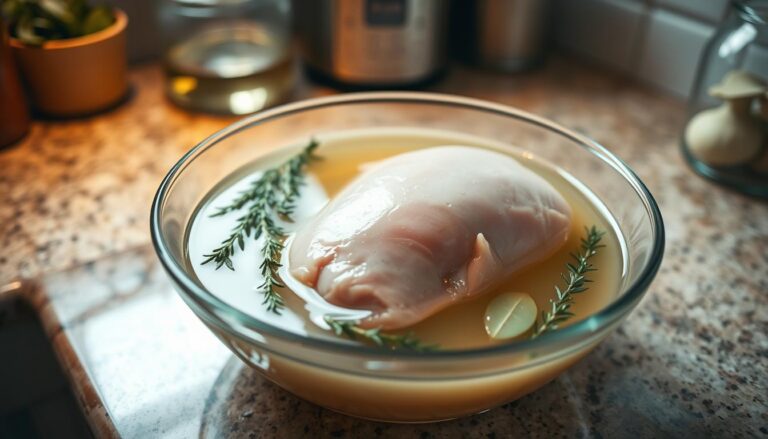Best Chicken Bouillon Substitute Options to Use in a Pinch
Table of Contents
Best Chicken Bouillon Substitute Options to Use in a Pinch
Ever been in the middle of cooking, only to realize you’re out of a key ingredient? It’s frustrating, especially when that ingredient adds depth and flavor to your favorite recipes. Whether you’re making a hearty soup or a savory casserole, missing that rich, savory taste can throw off your entire dish.
Luckily, there are plenty of easy swaps that deliver the same delicious results. From pantry staples to homemade solutions, you’ll never have to pause your cooking again. Let’s explore the best alternatives to keep your meals flavorful and on track.
Key Takeaways
- Chicken broth is the closest match for taste and convenience.
- Vegetable or beef broth can work in a pinch for different flavor profiles.
- Low-sodium options help control salt intake without sacrificing taste.
- Homemade versions allow for customization based on dietary needs.
- Most swaps follow a simple 1:1 ratio for easy adjustments.
Why You Might Need a Chicken Bouillon Substitute
Running low on pantry essentials can turn cooking into a challenge. Whether it’s an empty jar of cubes or dietary needs calling for a change, having backup options ensures your dishes stay flavorful.

Sudden shortages happen. Store-bought cubes or powders might be out of stock, or you might simply forget to restock. A reliable alternative keeps your recipes on track.
Dietary restrictions often demand swaps. Regular options pack 900mg of sodium per teaspoon—Wyler’s reduced-sodium version cuts this to 600mg. For vegetarians, brands like Herb-ox offer sodium-free choices.
Homemade versions give you control. Adjust salt levels, herbs, or spices to match your taste. Plus, they’re cost-effective compared to pre-packaged cubes.
| Option | Shelf Life | Best For |
|---|---|---|
| Broth (store-bought) | 1–2 years (unopened) | Quick soups, sauces |
| Homemade powder | 6 months | Custom flavor profiles |
| Liquid alternatives | 3–4 days (fridge) | Immediate use |
*Flavor flexibility* shines with substitutes. Enhance rice, soups, or casseroles by tweaking ingredients like garlic powder or dried herbs.
Storage matters too. While powders last months, liquid broths need quicker use. Plan your swaps based on how soon you’ll cook again.
The Best Chicken Bouillon Substitute: Chicken Broth
When your recipe calls for that rich, savory boost, broth steps in seamlessly. It mirrors the depth of cubes or powders while offering flexibility. Whether store-bought or homemade, this swap ensures your dish stays on track.

Store-Bought vs. Homemade Chicken Broth
Shelf-stable cartons are convenient but often high in sodium. Brands like Swanson or Pacific Foods offer reduced-salt versions. Homemade broth, though time-consuming, packs richer collagen and customizable flavors.
Freeze homemade batches in ice trays for portioned use. Store-bought lasts 1–2 years unopened, while homemade stays fresh for 3–4 days refrigerated.
How to Substitute Broth for Bouillon in Recipes
Use this simple ratio: 1 cube + 1 cup water = 1 cup broth. For powder, 1 teaspoon equals 1 cup liquid. Adjust salt in your dish if using commercial broth—it’s often saltier than cubes.
- Ideal uses: Soups like minestrone, gravies, or rice dishes.
- Flavor tip: Simmer broth with herbs (garlic, thyme) for extra depth.
- Storage: Freeze homemade broth for up to 3 months.
Try this swap in a turkey soup or mushroom risotto. The result? A dish just as flavorful as the original.
Other Quick Chicken Bouillon Alternatives
Flavor emergencies call for creative swaps—here’s how to handle them. When you’re out of traditional options, these pantry-friendly fixes save the day without sacrificing taste.
Dry White Wine for Depth of Flavor
Swap 25% of your recipe’s liquid with dry white wine for a rich, savory boost. Chardonnay or Sauvignon Blanc work best, adding acidity and complexity. Pro tip: The alcohol cooks off, leaving behind layers of flavor perfect for sauces or risottos.
Water with Seasoning Boosters
Simple water transforms with the right ingredients. Mix 1 tablespoon poultry seasoning per cup of water, or try an emergency blend of onion powder, garlic powder, and a pinch of MSG. Ideal for last-minute fixes in gravies or rice dishes.
Vegetable Broth for a Vegetarian Option
For plant-based meals, brands like Better Than Bouillon offer a robust vegetable base. Use it in soup or stews like Creole Skillet Dinner for a meat-free umami punch. It’s shelf-stable and blends seamlessly with other flavors.
- Wine ratio: 25% wine to 75% liquid for balanced acidity.
- Seasoned water: Elevate with herbs or soy sauce for quick depth.
- Vegetable broth: Sodium-free versions let you control salt levels.
These swaps keep your dishes on track, whether you’re simmering a hearty soup or whipping up a skillet meal. No more pauses—just flavorful results.
Low-Sodium Chicken Bouillon Substitutes
Cutting back on salt doesn’t mean sacrificing flavor—here’s how to keep your dishes tasty.
Reduced-Sodium Store-Bought Options
Brands like Wyler’s and Herb-ox offer low-sodium versions with 600mg sodium per teaspoon—33% less than regular options. McCormick’s reduced-salt blend uses sea salt and turmeric for a balanced taste.
Compare labels carefully. Some sodium-free choices replace salt with potassium chloride, ideal for hypertension diets. Herb-ox’s vegetable base is a standout for plant-based meals.
Homemade Low-Salt Bouillon Powder
Mix 1 cup nutritional yeast with 2 tbsp Herbamare and 1 tsp garlic powder. Add dried herbs like thyme or rosemary for depth. This DIY blend lasts 6 months in airtight jars.
For a salt-free kick, try potassium chloride. It mimics salt’s flavor without the sodium spike.
- Best herbs/spices: Sage, smoked paprika, or celery seed.
- Label trick: Avoid “hydrolyzed protein”—it’s hidden sodium.
- Recipe tip: Use in Creamy Asparagus Chowder for a heart-healthy twist.
Homemade Chicken Bouillon Powder Recipe
Crafting your own flavor-packed powder at home is easier than you think. With a few pantry staples, you can whip up a versatile blend that rivals store-bought options. Customize it to match your taste or dietary needs—no preservatives or hidden sodium.
Key Ingredients & Why They Work
Nutritional yeast is the star here. Its cheesy, umami flavor mimics the depth of traditional options. Plus, it adds 2g of vegan protein per tablespoon. Combine it with sea salt, garlic powder, and dried herbs like thyme for a balanced profile.
Avoid brewer’s yeast—it’s bitter and won’t deliver the same results. For a salt-free twist, try Herbamare’s herb blend.
| Ingredient | Amount | Purpose |
|---|---|---|
| Nutritional yeast | 1 cup | Umami base |
| Sea salt | 1/4 cup | Savory balance |
| Dried thyme | 2 tbsp | Herbaceous note |
Step-by-Step Preparation Guide
Blender method: Pulse all ingredients until fine. This creates a smoother powder ideal for sauces. For a coarser texture, hand-mix with a whisk.
Store in an airtight Ball jar with a chalk label. Keep it in a cool, dark place to maintain freshness.
Storage Tips for Long-Term Use
This recipe lasts up to 1 year if stored properly. For smaller batches, halve the ingredients and refresh every 6 months.
- Freezing: Not recommended—moisture clumps the powder.
- Labeling: Note the date to track shelf life.
- Usage: 1 tsp = 1 cup liquid in recipes.
How to Use Your Chicken Bouillon Substitutes in Recipes
Transform everyday meals with simple swaps that bring bold flavors. Whether you’re simmering soups or seasoning grains, these tricks ensure rich results. Adjust ratios and pairings to match your dish’s needs.
Soups and Stews
Upgrade classics like Wild Rice Mushroom Soup with homemade powder. Blend 1 tbsp with 8oz water for instant broth. For slow-cooked dishes like Sausage Sauerkraut Soup, add substitutes early to meld flavors.
- Pro tip: Sauté powder with onions for a deeper base.
- Balance creamy soups (e.g., Potato Leek) with a dash of lemon juice.
Flavoring Rice and Grains
Infuse plain rice with 1 tsp spice blend per uncooked cup. Try turmeric or smoked paprika for color and depth. For quinoa or couscous, whisk substitutes into cooking water.
| Grain | Flavoring Ratio | Best Pairings |
|---|---|---|
| Brown rice | 1 tsp + 2 cups water | Garlic, thyme |
| Farro | 1.5 tsp + 3 cups water | Rosemary, sun-dried tomatoes |
Enhancing Casseroles and Sauces
Revamp Chicken Biscuit Casserole by mixing powder into the gravy. For sauces, blend 1 tsp substitute with melted butter for a glossy finish. Sprinkle over popcorn for a savory snack.
“A pinch of MSG in DIY blends mimics umami without overpowering.”
- Casserole hack: Layer substitutes between ingredients for even flavoring.
- For Creamy Squash Soup, add substitutes post-blending to control saltiness.
Conclusion
Running out of pantry staples doesn’t mean your dishes lose flavor. With these five swaps—broth, wine, seasoned water, vegetable base, or DIY powder—you can keep meals rich and savory. Homemade options save money and let you control ingredients.
Experiment with herbs and spices to create unique blends. Store them properly to extend shelf life. Need inspiration? Explore our collection of 15+ soup recipes for tasty ideas.
Pro tip: Always taste-test before adding extra salt. Share your favorite flavor combinations in the comments!
FAQ
What can I use instead of chicken bouillon?
How do I replace bouillon cubes in a recipe?
Is there a low-sodium alternative to bouillon?
Can I use white wine as a substitute?
How long does homemade bouillon powder last?
What’s the best vegetarian option?
Can I freeze homemade broth for later use?
For more cooking tips, stay connected with us. We also recommend the cookbook Skinnytaste Simple: Easy, Healthy Recipes with 7 Ingredients or Fewer
For more Recipes about Chicken







